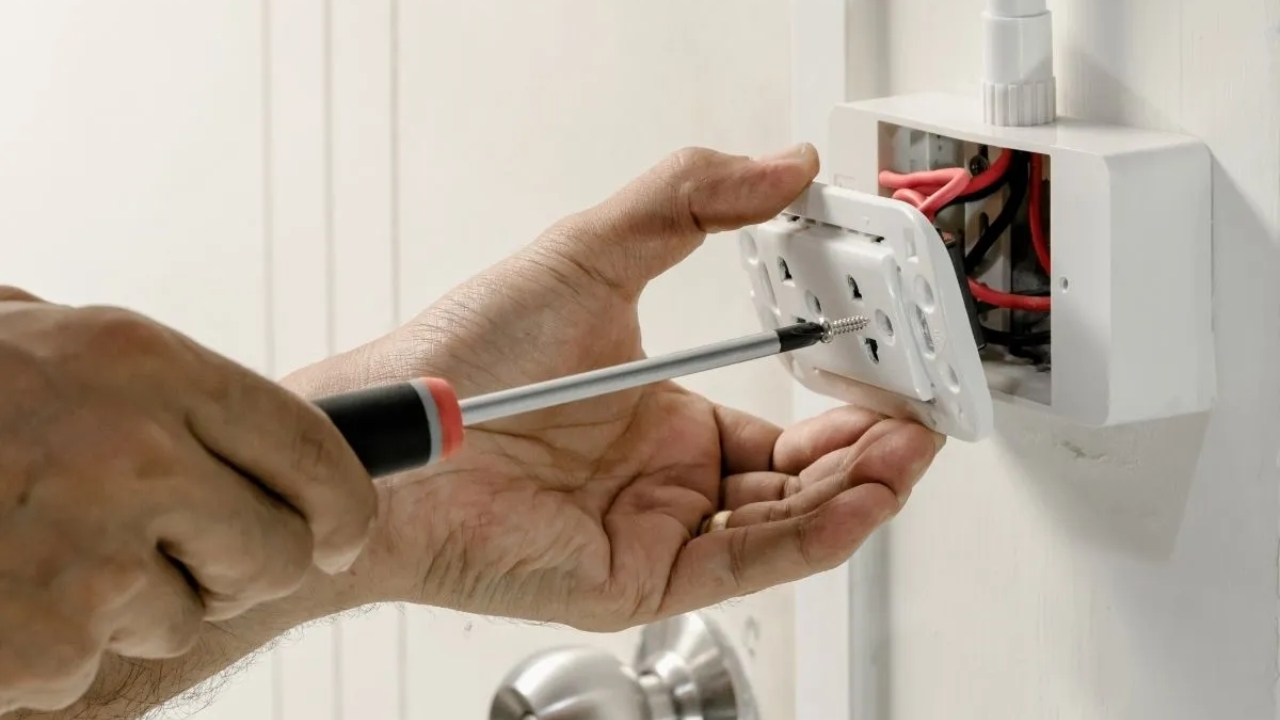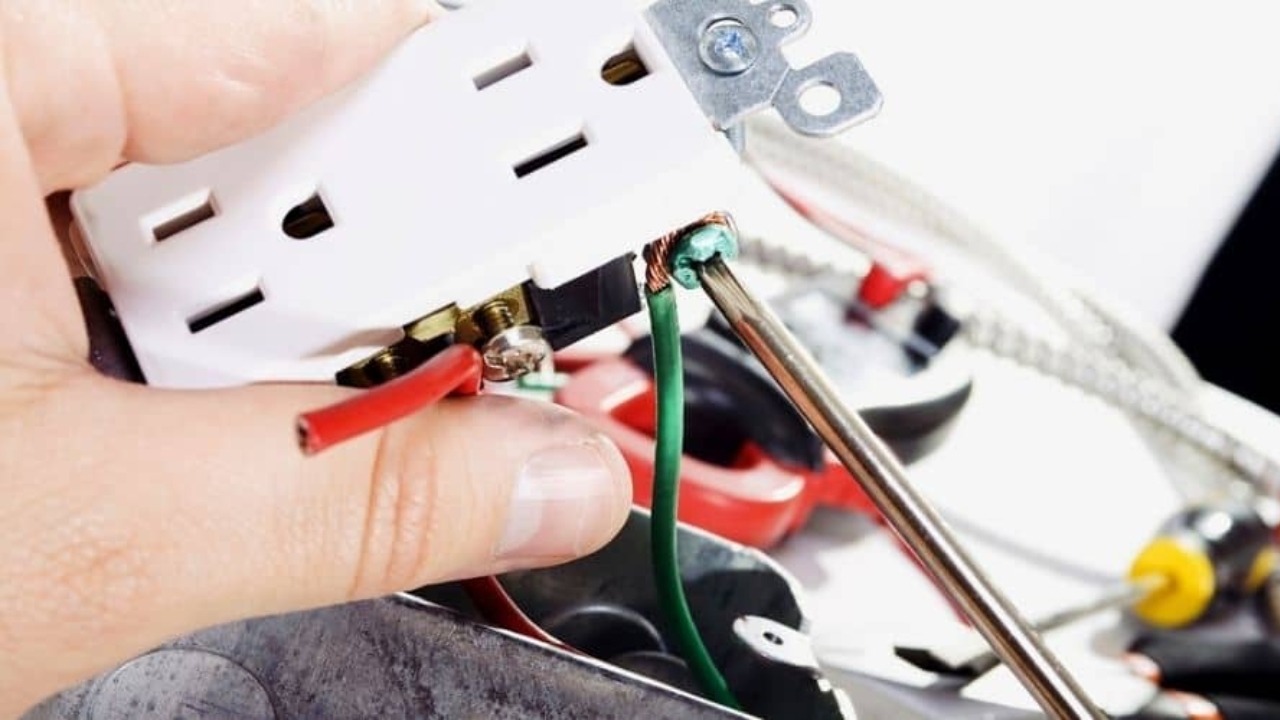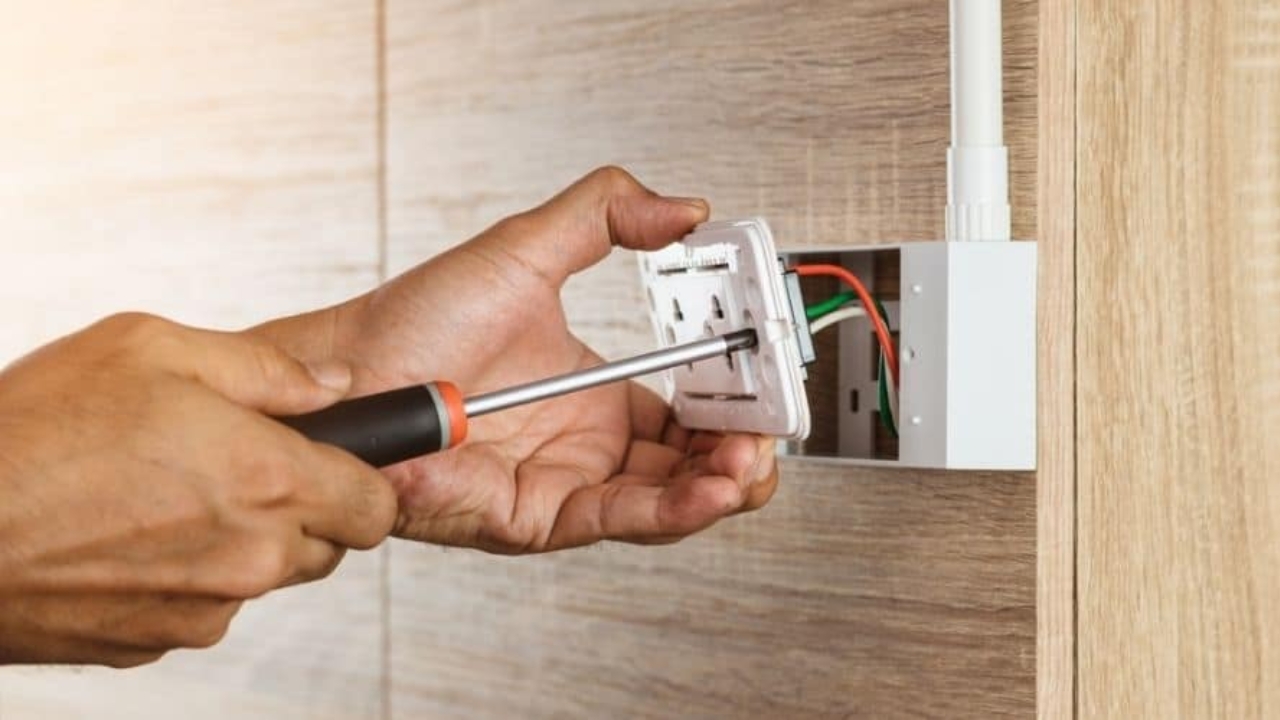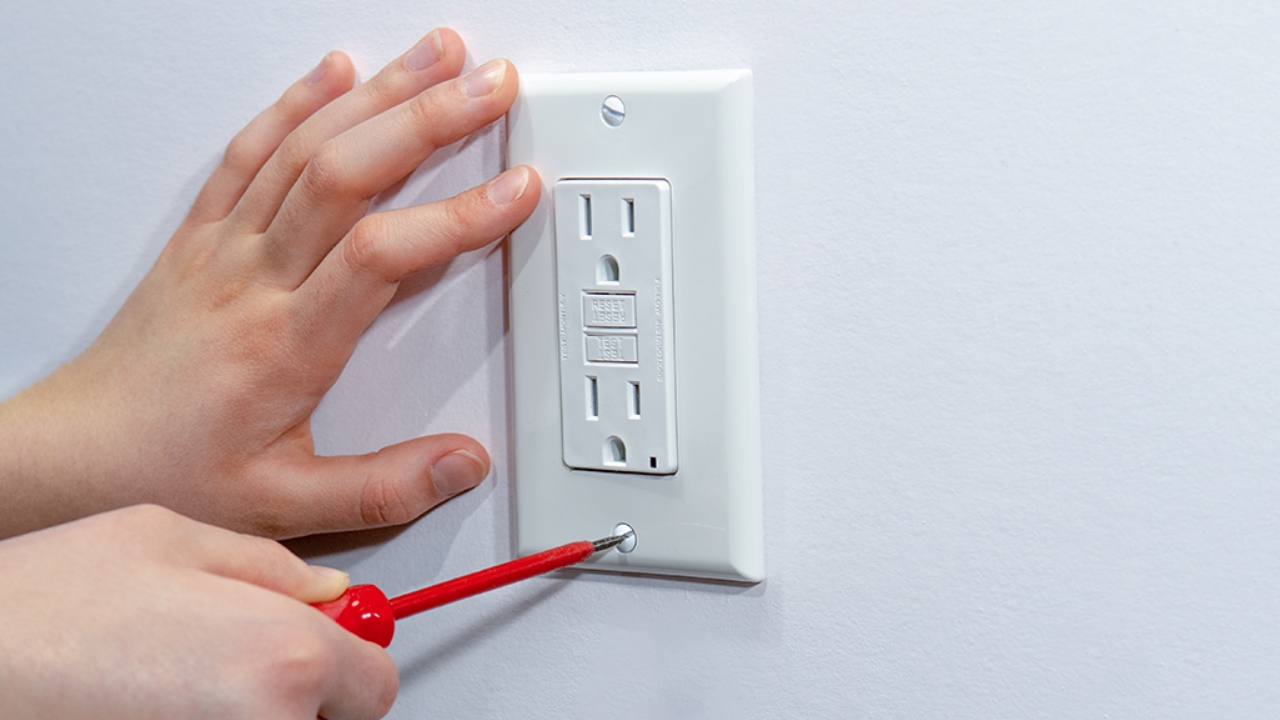If an outlet in your home is cracked, chipped, or feels loose when you plug something in, it’s time to replace it. Damaged outlets may cause short circuits and electric shocks if not fixed right away.
The good news is that replacing an outlet isn’t as difficult as it sounds. Using few tools and safety allow you to safely change an electrical outlet in just a few minutes. Below, you’ll find a clear steps about how to replace an outlet safely and correctly.
Before You Begin

Put Safety First
Working with electricity requires an extra care. Before you start DIY outlet replacement, ensure you are equipped with safety gear.
Wear:
- Closed-toe shoes
- Long pants and a long-sleeve shirt
- Insulated-gloves
- Safety-glasses
Also, remove any jewelry or metal accessories that can accidentally touch live wires.
Turn off the power before touching anything. Shutting off the electricity prevents shocks, electrocution, and helps avoid voltage spike or short circuit while you work.
If you’re not confident about working with electrical systems, don’t risk it. Call a licensed electrician to handle the replacement safely.
What You’ll Need
Tools:
- Voltage Tester
- 螺丝刀
- Wire Strippers
材料:
- Electrical Tape
- Replacement Outlet
Simple Steps to Replace Your Old Electrical Outlet

1. Turning Off the Power
First, make sure you turn off the power of the outlet you’re replacing by switching off the circuit breaker in your home’s electrical panel. Many panels have a labelled chart to help you identify which switch goes to which room or appliance.
2. Make Sure the Power is Off
After switching off the breaker, take out your voltage tester and test the outlet to ensure there is no electricity flowing.If you don’t have one, plug in a small lamp or another device and make sure it doesn’t turn on. Only move forward once you’re sure the outlet is completely off.
3. Remove the Cover Outlet
Next, loosen the screws using a screwdriver to remove the outlet’s cover or faceplate. Then, set both the screws and cover aside. Underneath, you’ll see the outlet with two screws – one at the top and one at the bottom – holding it to the wall.
4. Unscrew the Outlet and Pull it Out
Loosen the screws located at the top and bottom of the outlet. Then, gently pull it away from the wall. Do not pull it too hard to avoid disconnecting the wires that are still attached. You should see three wires connected to the back or sides of the outlet
5. Record or Label the Wiring
Before removing any wire, note which color is connected to which screw terminal. You can take a clear picture or short video of how everything is connected. This will serve as your reference when connecting the new outlet later. Usually, you’ll find:
- A black (hot) wire carrying the current
- A white (neutral) wire
- A green or bare copper (grounding) wire
6. Disconnect the Old Outlet
Gently remove each wire after loosening the screws. Inspect the wires closely. If they look frayed, burned, or damaged, trim the ends using wire strippers to expose clean copper. If the wiring is still in good shape, you can ship trimming and go straight to connecting your new outlet.
7. Connecting All the Wires to Your New Outlet by Following their Proper Positions
Now, attach the wires to the new outlet in the same order as before.
- Attach the black wire to the brass screw
- Attach the white wire to the silver screw
- The green or copper wire connects to the green screw
Double check your reference photo or video to make sure everything matches the original setup. Once all the screws are in place, tighten them firmly so the wires don’t move.
8. Reinstall the Outlet and Faceplate
Carefully tuck the wires back into wall box and align the outlet. Use the mounting screws to secure it firmly to the wall. Then, reattach the faceplate or replace it with a new one if you’re upgrading the look.
Make sure everything sits flush against the wall and that no wires are exposed.
9. Turn the Power Back On and Test It
To turn the power back on, switch on the circuit breaker. Test the outlet using your voltage tester to see if the power is on. If the device works and nothing feels warm or loose, you’ve successfully replaced your outlet!
Extra Tips for Safe Outlet Replacement

- Make sure that the amperage of your new outlet matches your home’s electrical system voltage rating.
- If you notice sparks, smoke, or unusual heat from an outlet after installation, turn off the power immediately. Contact a professional electrician.
- Use CGFI outlets for outdoor areas, kitchens, or bathrooms
- Keep a voltage tester in your toolbox. It is one of the most important tools for electrical work
结论

Learning how to replace an electrical outlet is a useful skill that can save your time and money. With a few simple tools and careful attention to safety, you can replace broken or outdated outlets on your own.
However, if you ever feel unsure about wiring or electrical systems, don’t hesitate to call a licensed electrical. It’s always better to stay safe when dealing with electricity.



